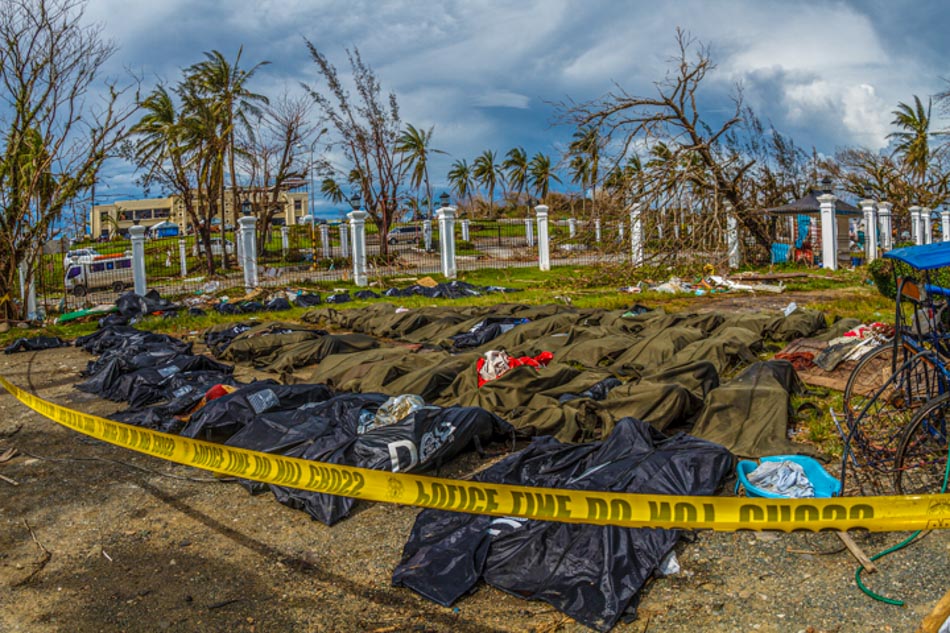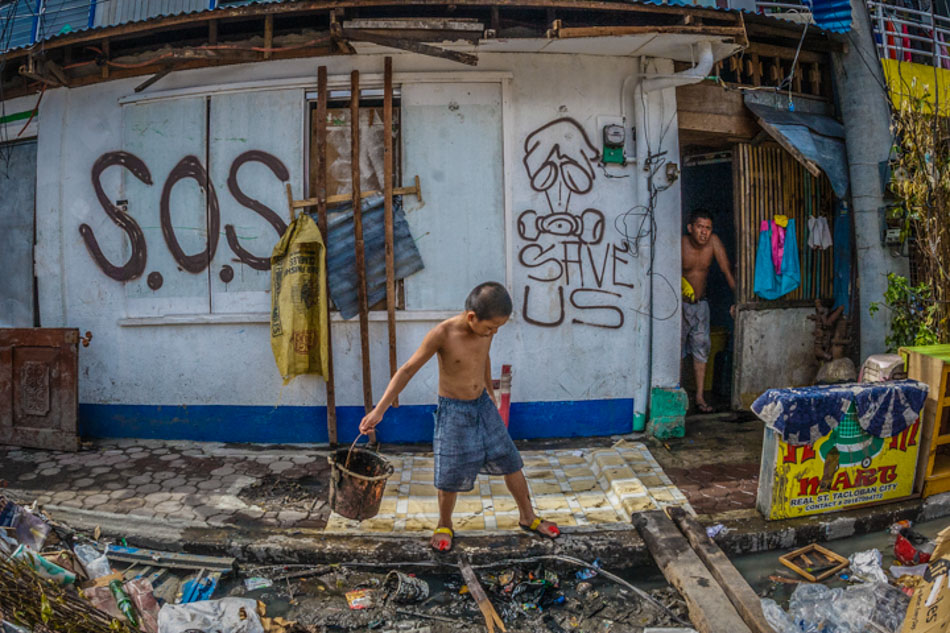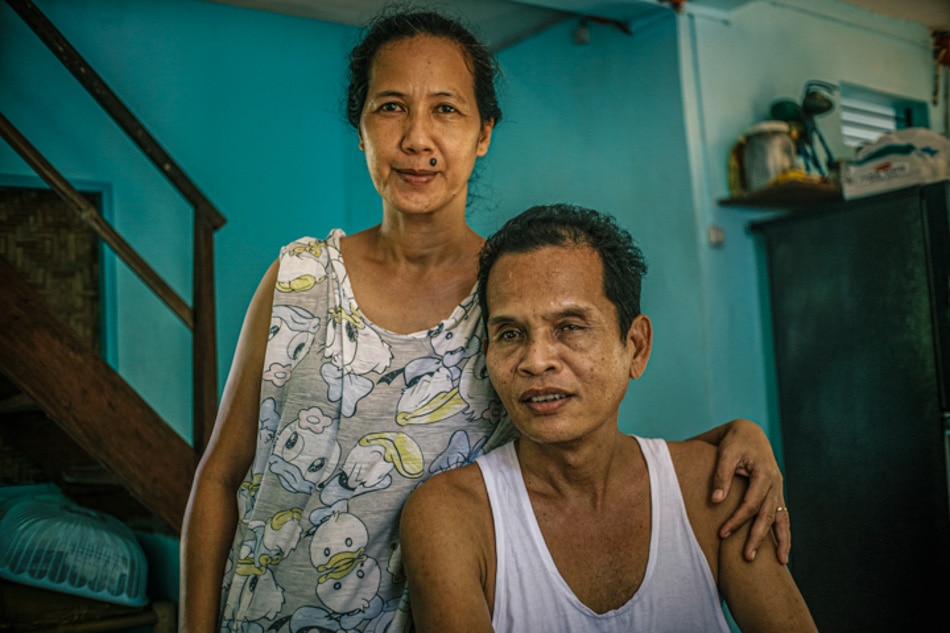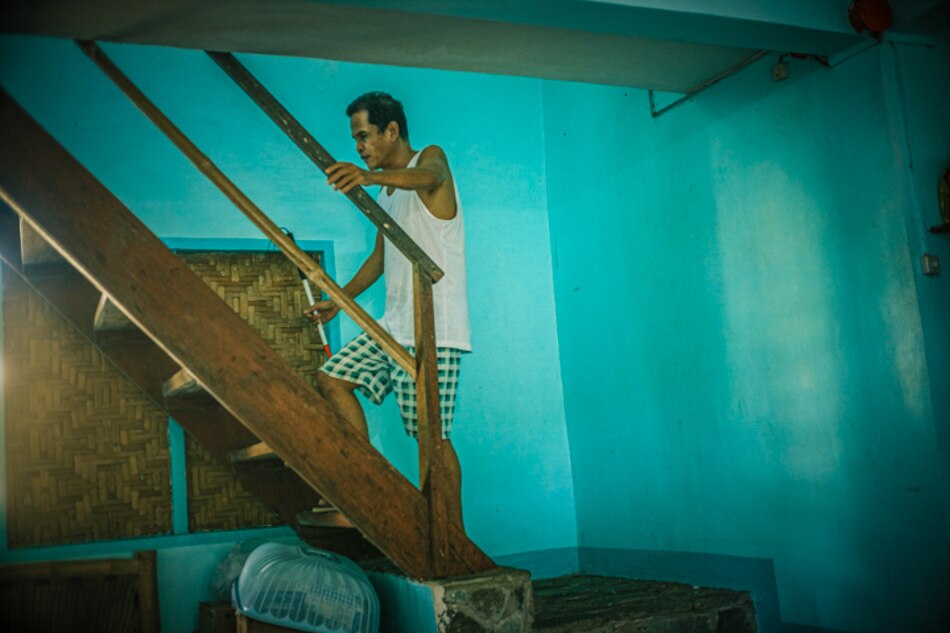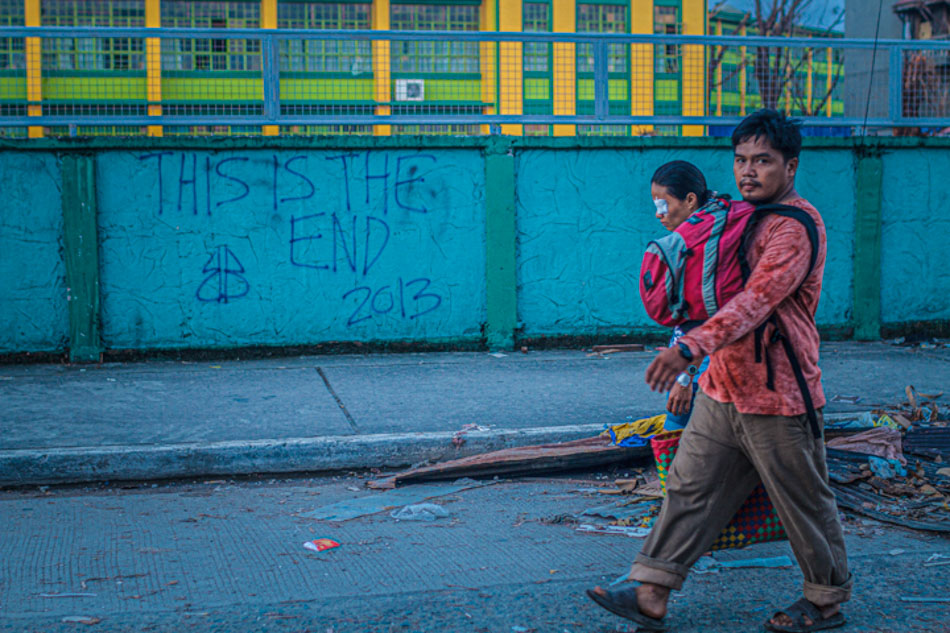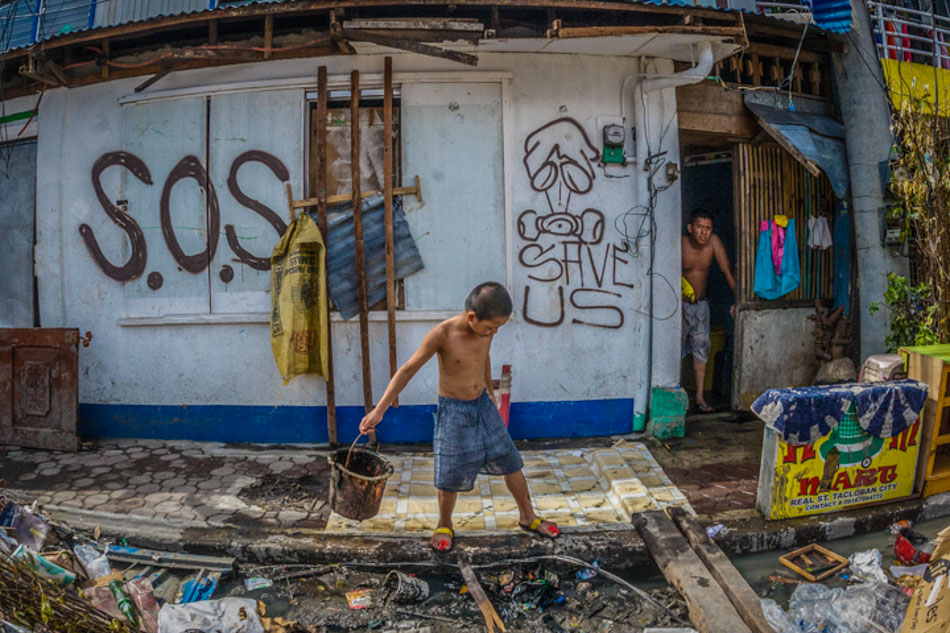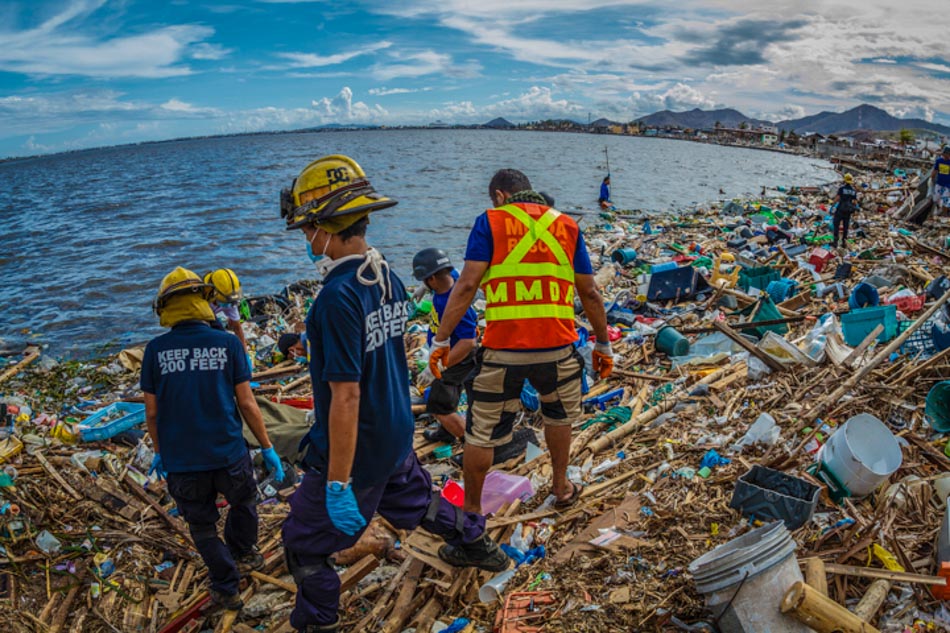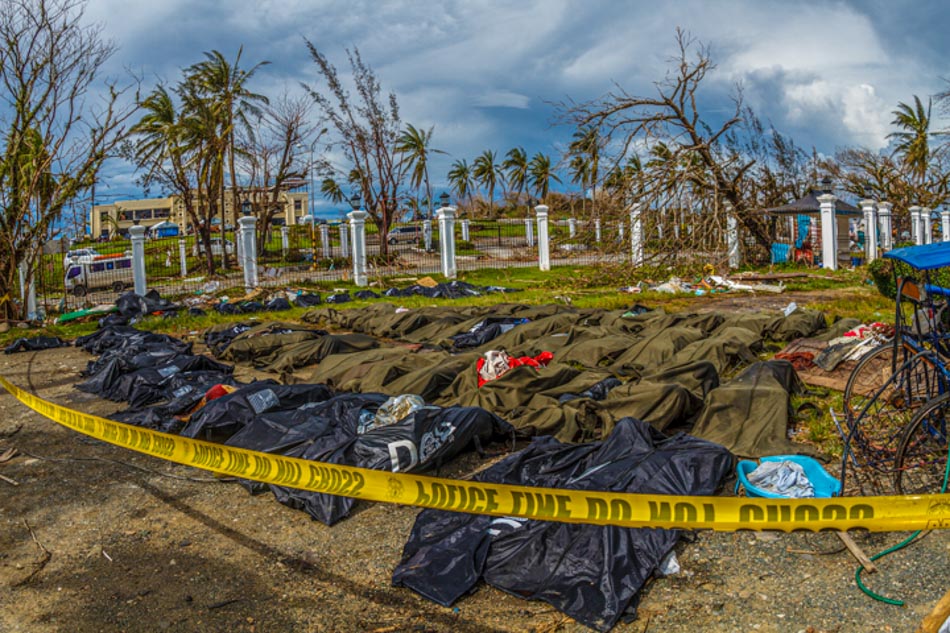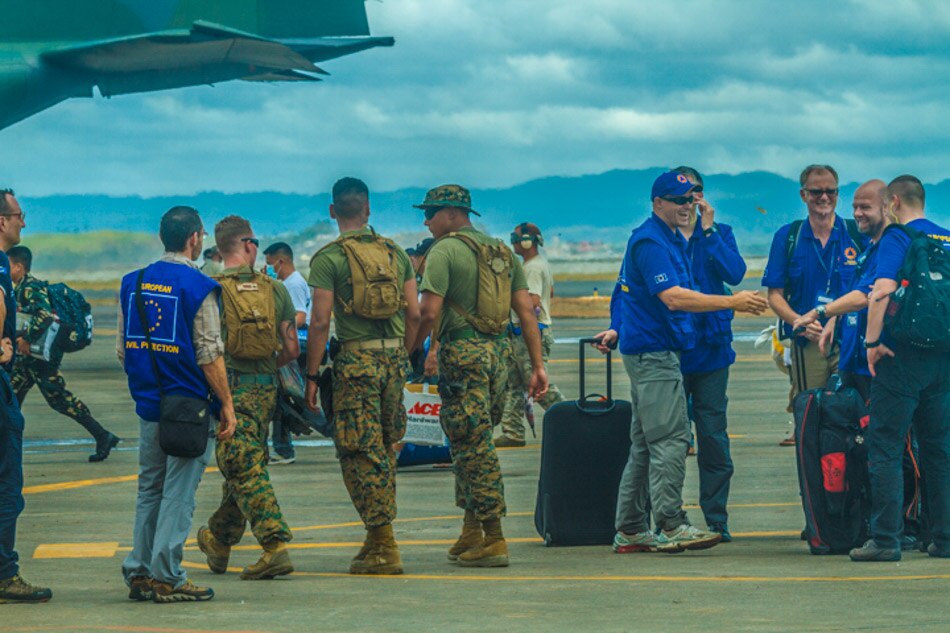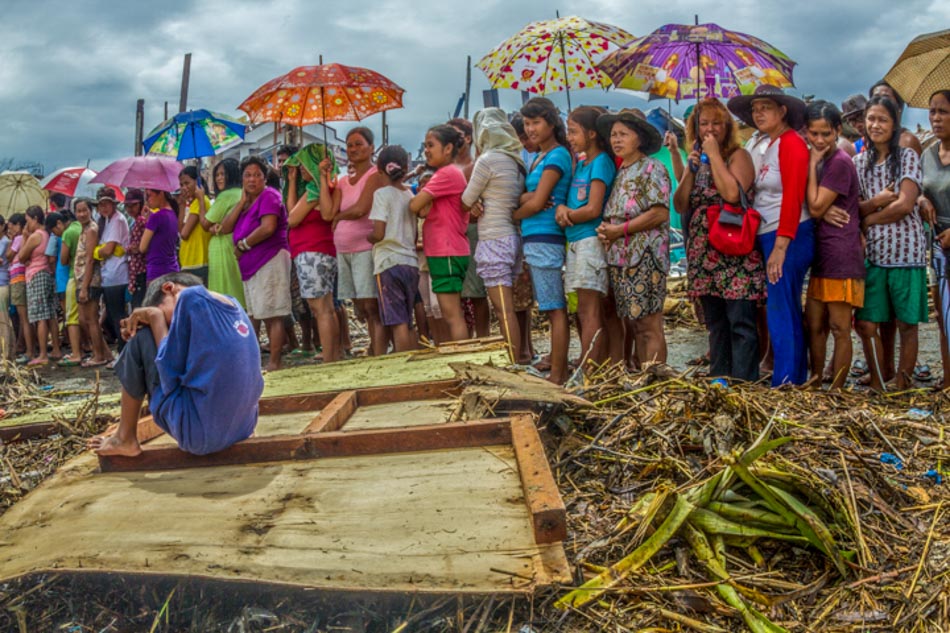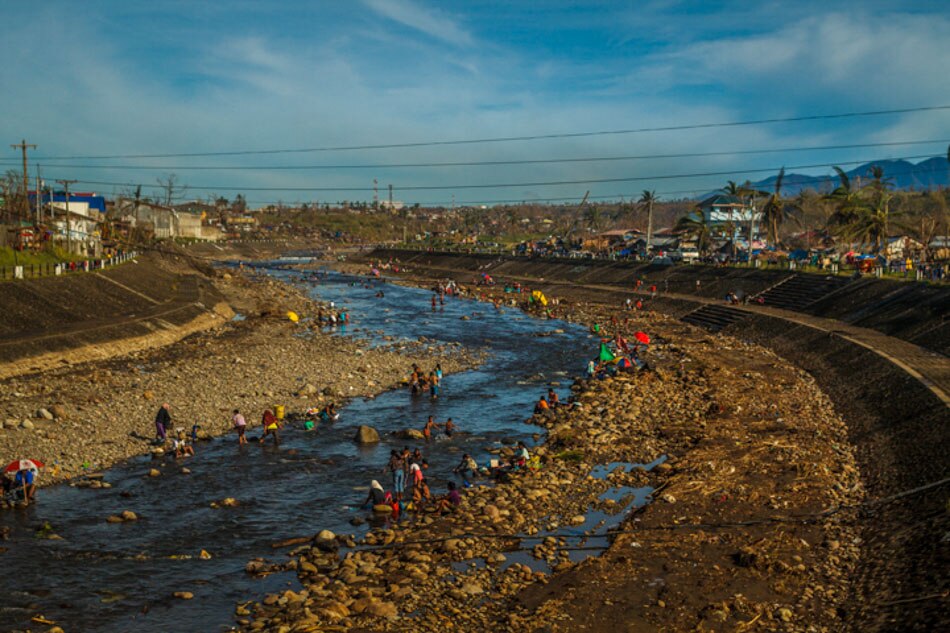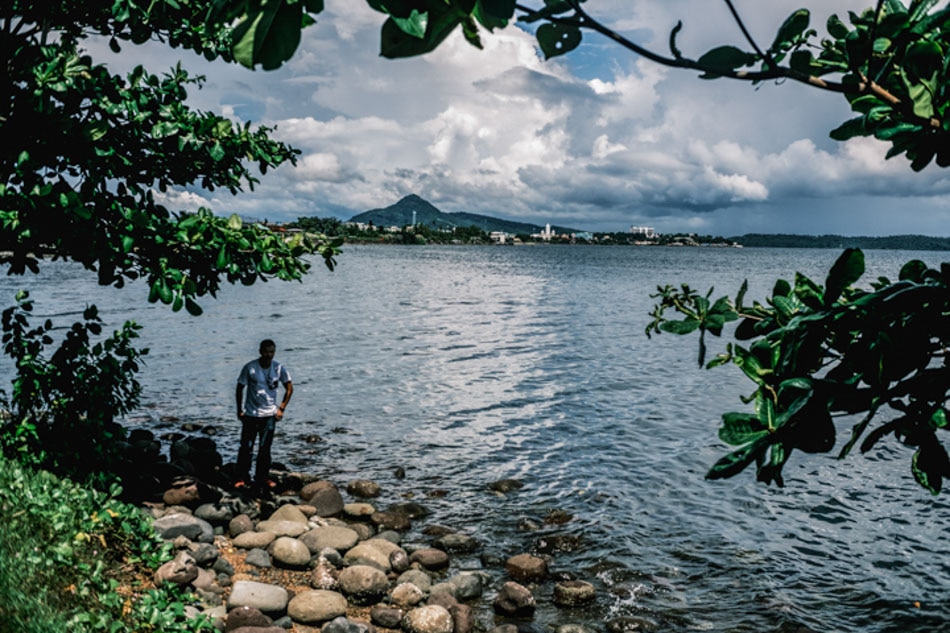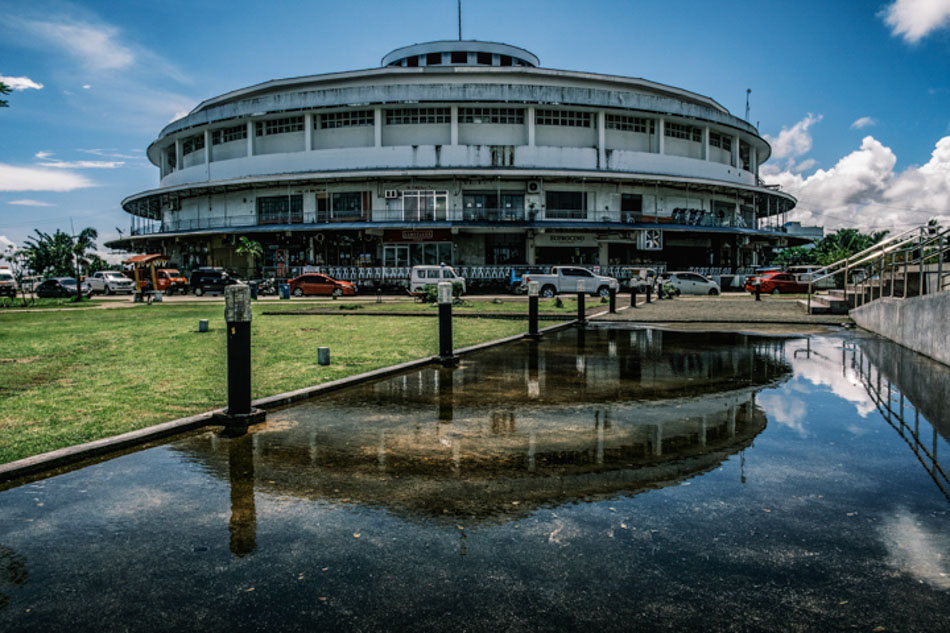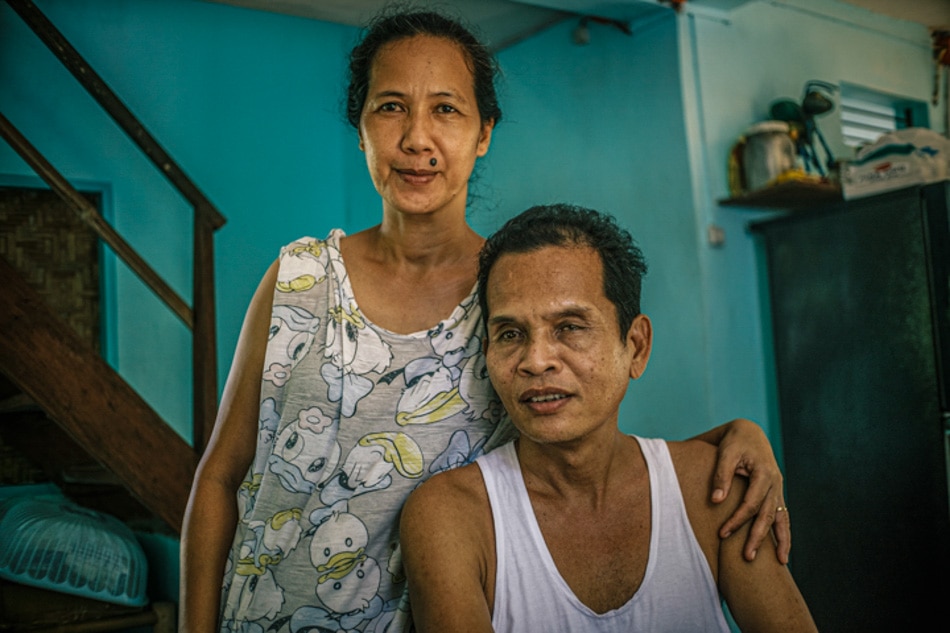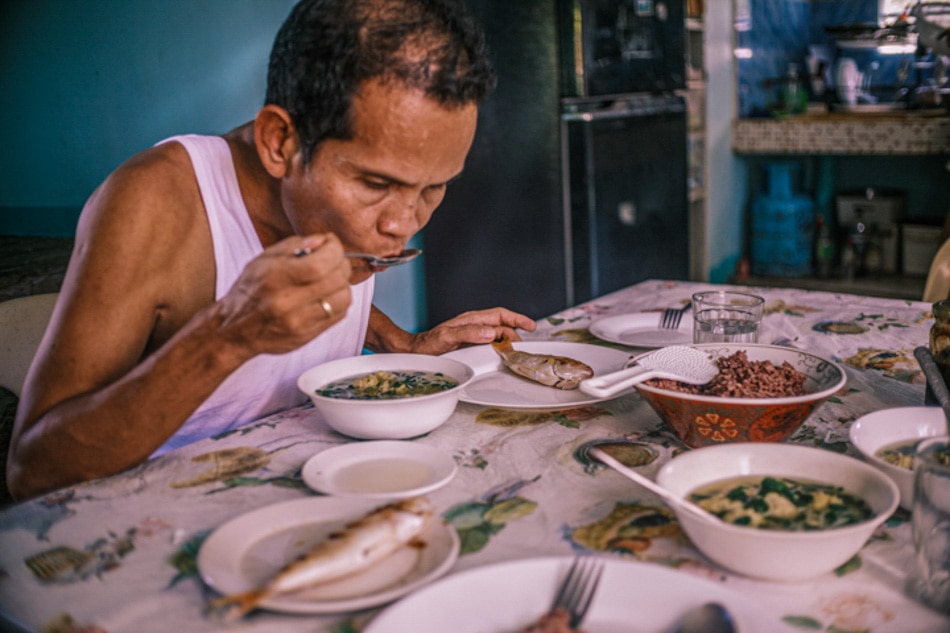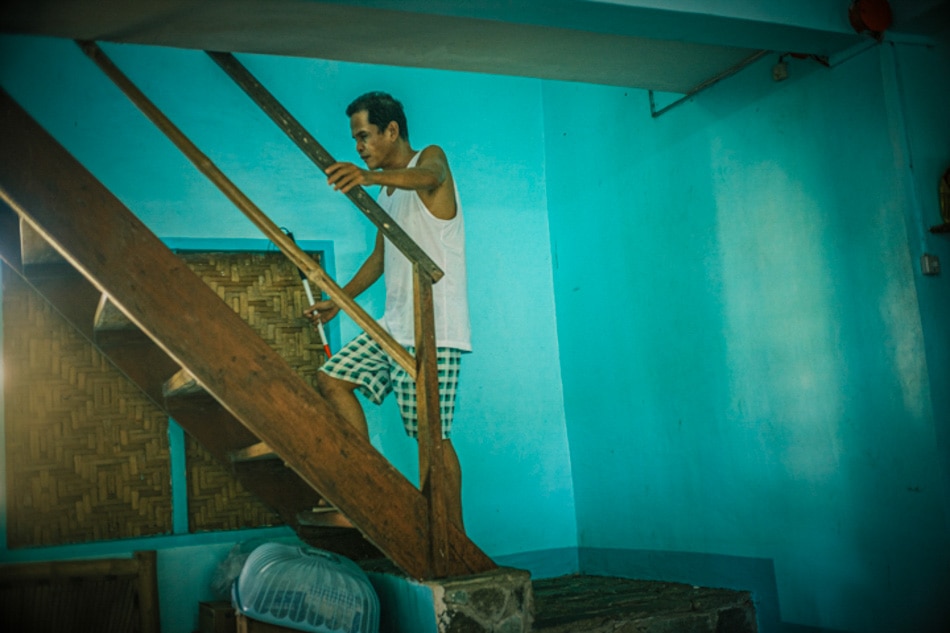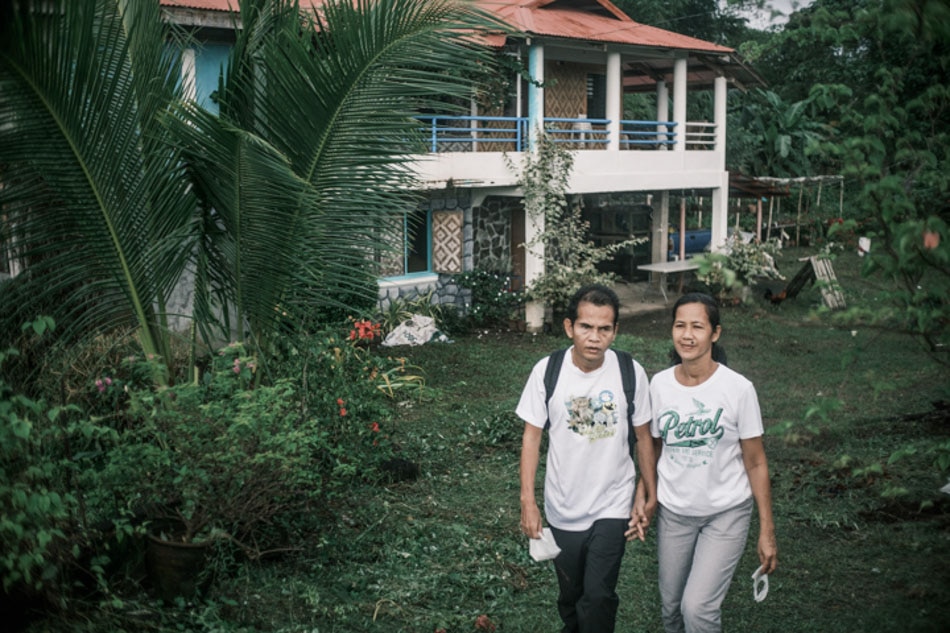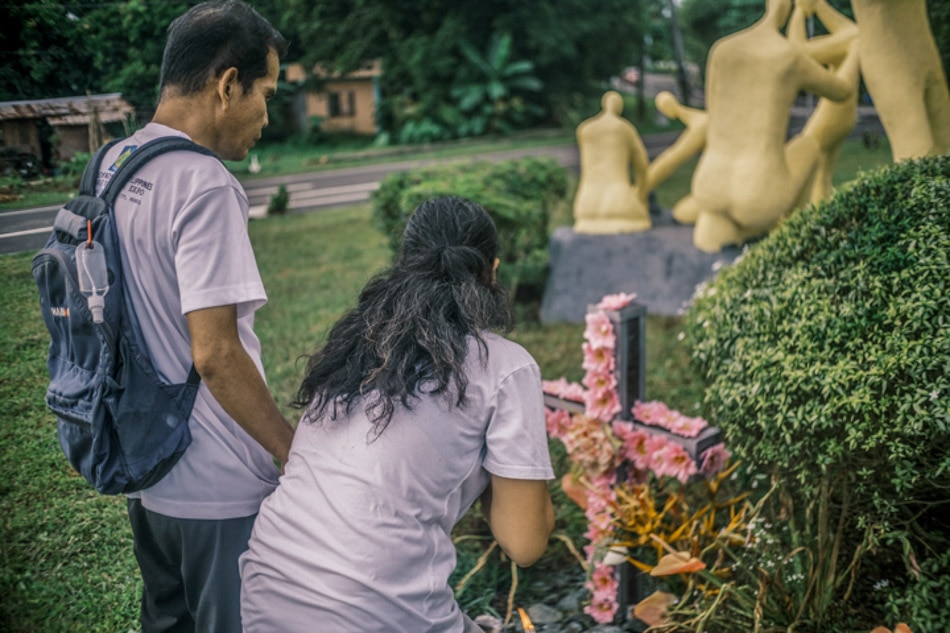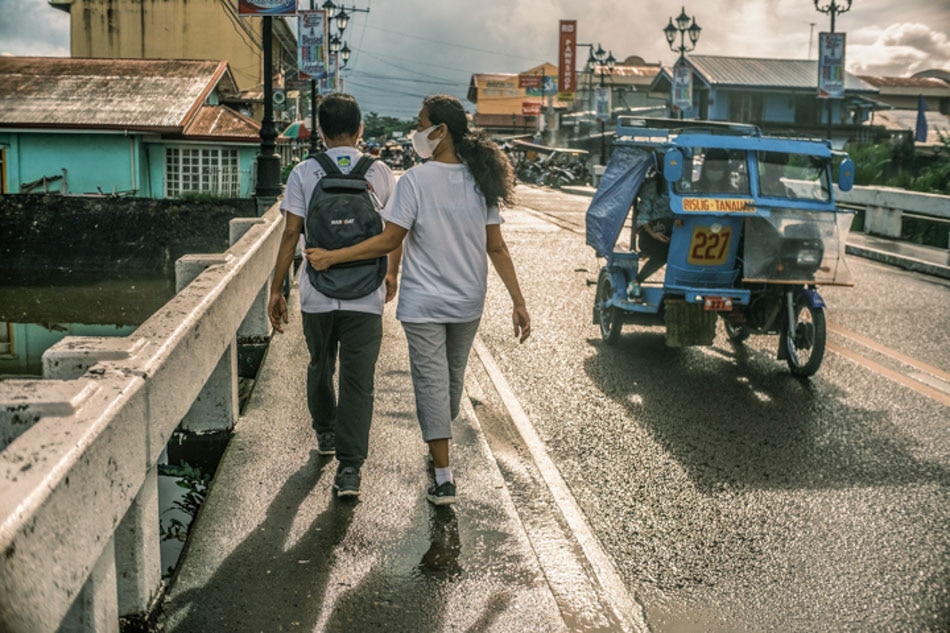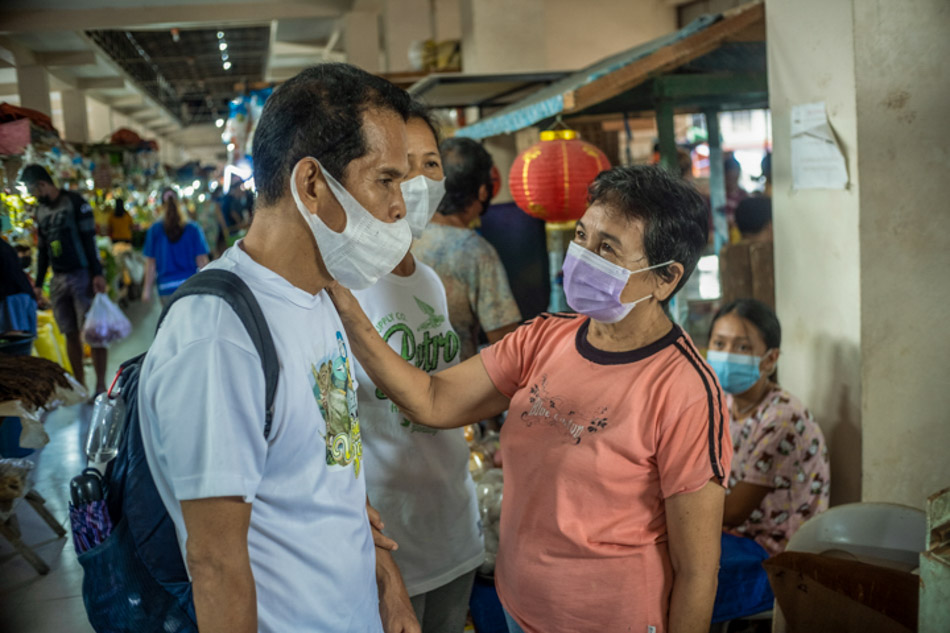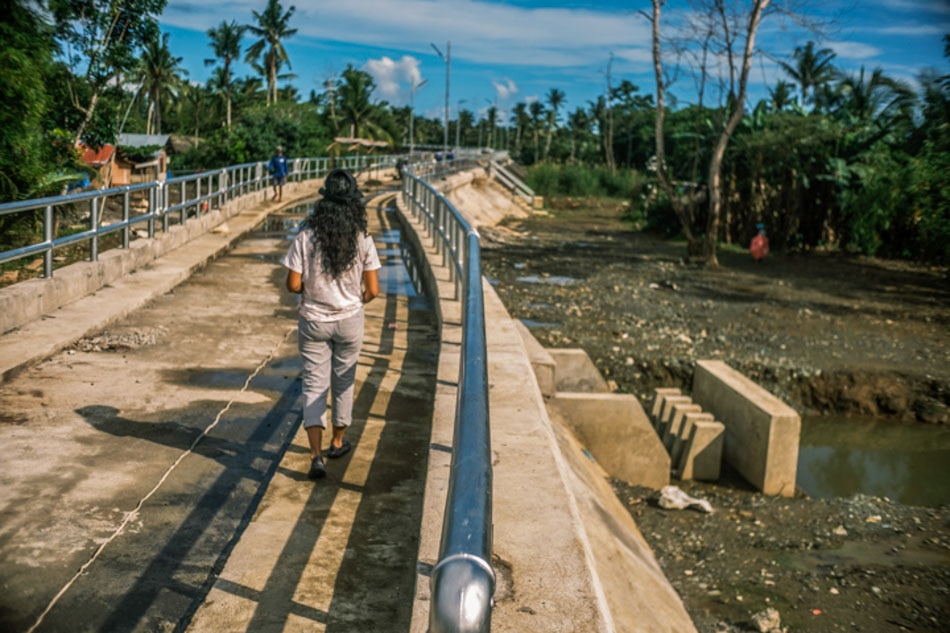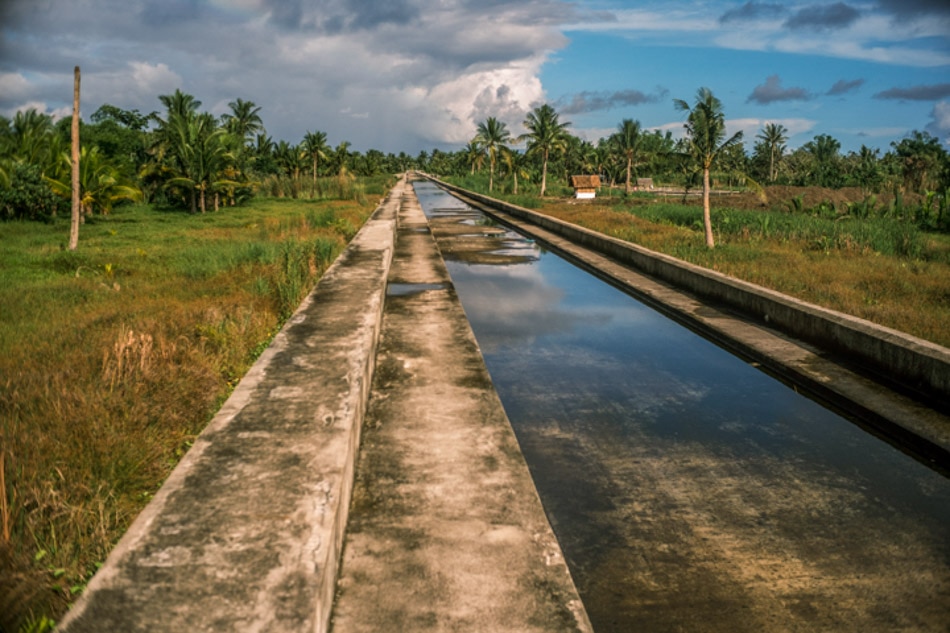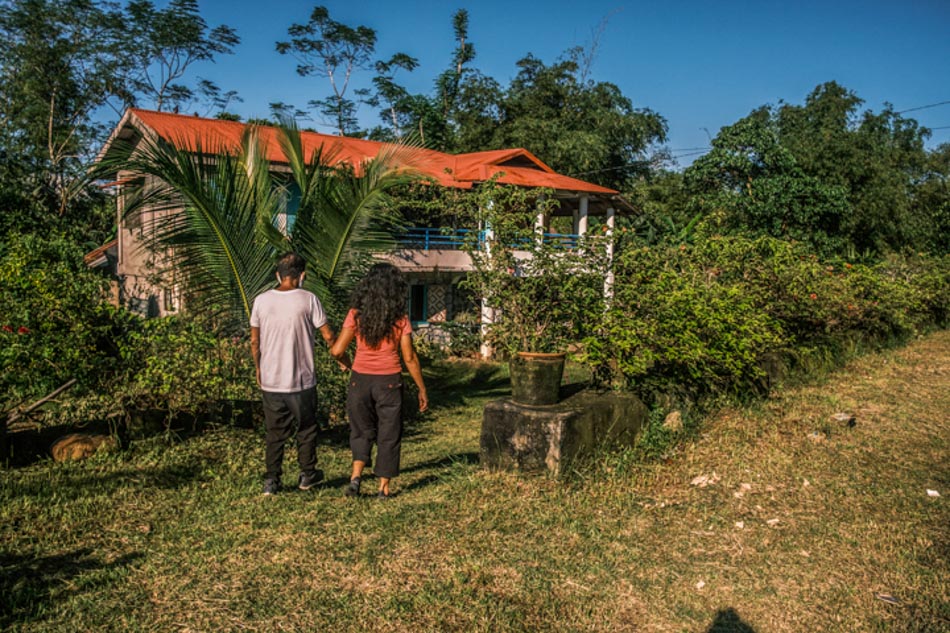Wiser and stronger after surviving typhoon Haiyan | ABS-CBN
ADVERTISEMENT

Welcome, Kapamilya! We use cookies to improve your browsing experience. Continuing to use this site means you agree to our use of cookies. Tell me more!
Wiser and stronger after surviving typhoon Haiyan
Wiser and stronger after surviving typhoon Haiyan
Luis Liwanag for Internews/PCP
Published Dec 05, 2021 03:05 PM PHT
|
Updated Dec 05, 2021 03:54 PM PHT
Time has not erased from the mind of Nick and Doris “Chai” Quieta what happened on Nov. 8, 2013. Nor has it healed the pain and suffering that typhoon Haiyan (Yolanda) brought to their families and that of more than 7, 000 others who perished or went missing in that tragedy.
Time has not erased from the mind of Nick and Doris “Chai” Quieta what happened on Nov. 8, 2013. Nor has it healed the pain and suffering that typhoon Haiyan (Yolanda) brought to their families and that of more than 7, 000 others who perished or went missing in that tragedy.
What they have now are lessons from the catastrophe, that is, to take good care of the environment because the abuse can bring a backlash so massive and violent like what was seen when Haiyan struck the east central region of the Philippine archipelago, with winds speeding at 195 miles (314 km) per hour. It was considered the most powerful, as recorded, ever to strike any part of the earth.
What they have now are lessons from the catastrophe, that is, to take good care of the environment because the abuse can bring a backlash so massive and violent like what was seen when Haiyan struck the east central region of the Philippine archipelago, with winds speeding at 195 miles (314 km) per hour. It was considered the most powerful, as recorded, ever to strike any part of the earth.
I saw the massive devastation Haiyan wrought when I arrived a few days after in Tacloban, capital of Leyte, one of the provinces severely hit by the super typhoon.
I saw the massive devastation Haiyan wrought when I arrived a few days after in Tacloban, capital of Leyte, one of the provinces severely hit by the super typhoon.
As a photojournalist, I have covered Tacloban City but I was not prepared for the devastation I witnessed. It was like a scene after a nuclear explosion without the ensuing radiation. Trees had fallen and houses were flattened all around lying in one direction. The coconut trees looked like women whose hair were pulled down. With the trees fallen to the ground, the sun shone fiercely at the dead and the survivors.
As a photojournalist, I have covered Tacloban City but I was not prepared for the devastation I witnessed. It was like a scene after a nuclear explosion without the ensuing radiation. Trees had fallen and houses were flattened all around lying in one direction. The coconut trees looked like women whose hair were pulled down. With the trees fallen to the ground, the sun shone fiercely at the dead and the survivors.
ADVERTISEMENT
As we walked through the devastation in Palo and Tacloban, we noticed the urgent plea, “SOS, help us! We need food,” written on the remaining standing concrete walls. People were walking aimlessly and staring like zombies.
As we walked through the devastation in Palo and Tacloban, we noticed the urgent plea, “SOS, help us! We need food,” written on the remaining standing concrete walls. People were walking aimlessly and staring like zombies.
The misery amid the devastation was compounded by rumors, many of them untrue.
The misery amid the devastation was compounded by rumors, many of them untrue.
Back in Ormoc, another town of Leyte, we were warned about rumors that there were prisoners, who escaped from jail in Tacloban, raping women and stealing food from travelers. That turned out to be false.
Hunger makes some people commit desperate acts. When we were interviewing survivors in a deserted bus terminal, a lone biker asked to have a drink from one of our water bottles. When we looked back afterwards, he was gone with all of our water provision.
Back in Ormoc, another town of Leyte, we were warned about rumors that there were prisoners, who escaped from jail in Tacloban, raping women and stealing food from travelers. That turned out to be false.
Hunger makes some people commit desperate acts. When we were interviewing survivors in a deserted bus terminal, a lone biker asked to have a drink from one of our water bottles. When we looked back afterwards, he was gone with all of our water provision.
Some talked about YouTube videos claiming to be monitoring the path of Haiyan and noticed that microwave signals allegedly emanating from an array of antennas were hitting the eye of the typhoon and making it stronger and controlling its path. This was debunked by scientists.
Some talked about YouTube videos claiming to be monitoring the path of Haiyan and noticed that microwave signals allegedly emanating from an array of antennas were hitting the eye of the typhoon and making it stronger and controlling its path. This was debunked by scientists.
Science, however, gives a link between Haiyan and a warming world. Storms receive their energy from the ocean. New research suggests that the Pacific is, indeed, warming – possibly at its fastest rate in 10,000 years. If the extra heat stored in the oceans is released into the atmosphere, then the severity of storms will inevitably increase. In short, a warmer world will probably feature more extreme weather.
Climate change became the most convenient reason for typhoon Haiyan as if it was a natural phenomenon that was not within man’s control.
Science, however, gives a link between Haiyan and a warming world. Storms receive their energy from the ocean. New research suggests that the Pacific is, indeed, warming – possibly at its fastest rate in 10,000 years. If the extra heat stored in the oceans is released into the atmosphere, then the severity of storms will inevitably increase. In short, a warmer world will probably feature more extreme weather.
Climate change became the most convenient reason for typhoon Haiyan as if it was a natural phenomenon that was not within man’s control.
ADVERTISEMENT
It is not exactly correct.
It is not exactly correct.
The United Nations defines climate change as: “long-term shifts in temperatures and weather patterns. These shifts may be natural, such as through variations in the solar cycle. But since the 1800s, human activities have been the main driver of climate change, primarily due to burning fossil fuels like coal, oil and gas.”
The United Nations defines climate change as: “long-term shifts in temperatures and weather patterns. These shifts may be natural, such as through variations in the solar cycle. But since the 1800s, human activities have been the main driver of climate change, primarily due to burning fossil fuels like coal, oil and gas.”
Nick and Chai Quieta are both agriculturists who graduated from the Visayas State University. They lost 14 members of their family, including their four children, during the typhoon Haiyan.
Nick and Chai Quieta are both agriculturists who graduated from the Visayas State University. They lost 14 members of their family, including their four children, during the typhoon Haiyan.
What can they say about climate change and typhoon Haiyan?
“The typhoon that caused the destruction in Eastern Visayas was man-made,” the Quieta couple said.
What can they say about climate change and typhoon Haiyan?
“The typhoon that caused the destruction in Eastern Visayas was man-made,” the Quieta couple said.
“Because our greed and unlimited abuse of depleting natural resources to use it to build more products, it had caused the earth to exceed normal temperatures. Man’s quest for solutions also creates more problems,” they added.
“Because our greed and unlimited abuse of depleting natural resources to use it to build more products, it had caused the earth to exceed normal temperatures. Man’s quest for solutions also creates more problems,” they added.
ADVERTISEMENT
Nick and Chai recall that a day before Haiyan hit Tacloban, they brought their four children to stay at their parents’ home in the same city. Chai actually tried to fetch their youngest child, who was a year and a half old, but the older children told her to stay with Nick instead. “Mom, no! He stays with us. You take care of father,” one of the older children said.
Nick and Chai recall that a day before Haiyan hit Tacloban, they brought their four children to stay at their parents’ home in the same city. Chai actually tried to fetch their youngest child, who was a year and a half old, but the older children told her to stay with Nick instead. “Mom, no! He stays with us. You take care of father,” one of the older children said.
Typhoon Haiyan’s storm surge destroyed their parents’ home and killed everybody there – all 14 of them, including their four children.
Nick did the painful job of retrieving the corpses of their family members, then cleaning before burying them. Chai was so distraught to even look at the remains of their children before burying them in a mass grave near a highway junction close to their home.
She said she wanted to remember them alive, struggling but one happy family.
Typhoon Haiyan’s storm surge destroyed their parents’ home and killed everybody there – all 14 of them, including their four children.
Nick did the painful job of retrieving the corpses of their family members, then cleaning before burying them. Chai was so distraught to even look at the remains of their children before burying them in a mass grave near a highway junction close to their home.
She said she wanted to remember them alive, struggling but one happy family.
When asked how they were able to move on with their life, Chai credited “prayers, positive mind, and acceptance.”
With support from their community, friends and family, the couple continued their love for agriculture. Nick is still giving technical support to farmers in the area. He maintains a menagerie of racing pigeons, rabbits and other livestock in their backyard. Chai attends to other farmer clients and spearheads the local government unit’s stingless bee propagation. They also have a mini farm.
They set up a children’s library with donated books serving other Haiyan survivors’ children in the community.
When asked how they were able to move on with their life, Chai credited “prayers, positive mind, and acceptance.”
With support from their community, friends and family, the couple continued their love for agriculture. Nick is still giving technical support to farmers in the area. He maintains a menagerie of racing pigeons, rabbits and other livestock in their backyard. Chai attends to other farmer clients and spearheads the local government unit’s stingless bee propagation. They also have a mini farm.
They set up a children’s library with donated books serving other Haiyan survivors’ children in the community.
Positive thinking and their love for each other, which served them as they worked on overcoming the Haiyan crisis, were put to test again when the coronavirus disease 2019 (Covid-19) pandemic hit the country last year.
Positive thinking and their love for each other, which served them as they worked on overcoming the Haiyan crisis, were put to test again when the coronavirus disease 2019 (Covid-19) pandemic hit the country last year.
Nick was requested to go on a field assignment to analyze the soil of a community farm which was to be sold. Confident of his protective footwear, Nick passed through a muddy section of the property, checking soil samples.
Nick was requested to go on a field assignment to analyze the soil of a community farm which was to be sold. Confident of his protective footwear, Nick passed through a muddy section of the property, checking soil samples.
ADVERTISEMENT
Four days later, his officemates noticed that his face was very pale and his eyes turned bloodshot. He developed high fever while his whole body was cold.
Four days later, his officemates noticed that his face was very pale and his eyes turned bloodshot. He developed high fever while his whole body was cold.
When they went to a hospital, Nick was diagnosed to have leptospirosis. The virus attacked Nick’s lungs, kidney and spine and it was going up to his brain. Doctors focused on treating his lungs because it was filled with water. The viral spread was slowed down but Nick went totally blind. The doctors told him that the virus was contained but not before it destroyed the lens of his eyes. He was told that most victims of leptospirosis die within three days.
When they went to a hospital, Nick was diagnosed to have leptospirosis. The virus attacked Nick’s lungs, kidney and spine and it was going up to his brain. Doctors focused on treating his lungs because it was filled with water. The viral spread was slowed down but Nick went totally blind. The doctors told him that the virus was contained but not before it destroyed the lens of his eyes. He was told that most victims of leptospirosis die within three days.
Nick refused to undergo surgery and signed a waiver so he can go home. The couple turned to alternative form of healing to save his unaffected organs.
Nick refused to undergo surgery and signed a waiver so he can go home. The couple turned to alternative form of healing to save his unaffected organs.
That was one year ago. Nick has survived the critical period and is able to walk and jog every morning with the assistance of Chai.
Farmers still troop to their home for technical advice in agriculture.
Nick says that farmers have to deal with climate change manifested through unpredictable changes in weather, which affects the cycle of planting and harvesting.
That was one year ago. Nick has survived the critical period and is able to walk and jog every morning with the assistance of Chai.
Farmers still troop to their home for technical advice in agriculture.
Nick says that farmers have to deal with climate change manifested through unpredictable changes in weather, which affects the cycle of planting and harvesting.
“Our advice to farmers is to plant and cultivate cash crops which need a shorter time to mature and harvest. In the province of Leyte, we encourage the farmers to diversify. Aside from rice, they should also plant vegetables. Practice multicropping.”
“Our advice to farmers is to plant and cultivate cash crops which need a shorter time to mature and harvest. In the province of Leyte, we encourage the farmers to diversify. Aside from rice, they should also plant vegetables. Practice multicropping.”
ADVERTISEMENT
Nick tells farmers that insects attack different kinds of vegetables. Ampalaya or bitter gourd is not attacked by insects that attack rice. “We also advise farmers not to plant vegetables during wet season, especially in low-lying areas. However, if they still want to plant during the wet season, they should have good drainage system that lets water escape quickly since vegetables are very sensitive to flooding or stagnant water.”
Nick tells farmers that insects attack different kinds of vegetables. Ampalaya or bitter gourd is not attacked by insects that attack rice. “We also advise farmers not to plant vegetables during wet season, especially in low-lying areas. However, if they still want to plant during the wet season, they should have good drainage system that lets water escape quickly since vegetables are very sensitive to flooding or stagnant water.”
There is always a solution to every problem. But we have to find a solution that does not cause more problems.
There is always a solution to every problem. But we have to find a solution that does not cause more problems.
This story and the photos were produced with the support of Internews’ Earth Journalism Network and Photojournalists Center of the Philippines.
This story and the photos were produced with the support of Internews’ Earth Journalism Network and Photojournalists Center of the Philippines.
Read More:
Haiyan
typhoon Yolanda
Tanauan
Leyte
Nick Quieta
Doris Chai Quieta
climate change
Internews
PCP
Yolanda
ADVERTISEMENT
ADVERTISEMENT



